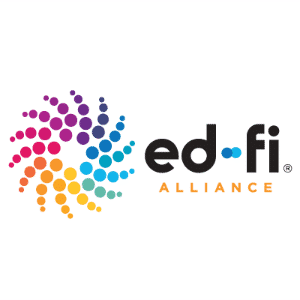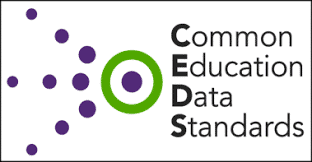Aa11y Project
Resource Type: Open Source Tools
Organization: Open Source Community
Use Case/Domains: Accessibility
Description: A community-driven effort to make web accessibility easier.
IMS Accessible Portable Item Protocol® (APIP®)
Resource Type: Technical Specification
Organization: IMS Global
Use Case/Domains: Accessibility, Assessment
Description: A technical standard for digital interchange of assessment content. APIP also describes digital delivery options for a range of common accessibility needs. Use of APIP enables assessment materials to be exchanged digitally among a variety of products, such as item/test authoring products, item banks, and test delivery systems. APIP is a subset of QTI. With the release of QTI 3 accessibility will be better supported by integrating APIP back into the base QTI specification and incorporating the relevant W3C specifications and accessibility best practices.
American National Standards Institute (ANSI)
Resource Type: Technical Specification
Organization: ANSI
Use Case/Domains: P-20W Data Domains
Description: As the voice of the U.S. standards and conformity assessment system, the American National Standards Institute (ANSI) empowers its members and constituents to strengthen the U.S. marketplace position in the global economy while helping to assure the safety and health of consumers and the protection of the environment. ANSI is the sole U.S. representative of the International Organization for Standardization (ISO), and as a founding member of the ISO, ANSI plays an active role in its governance and in U.S. implementations of the international standards. ANSI also has U.S. specific standards such as encoding of character sets.
Accessible Rich Internet Applications Suite (ARIA)
Resource Type: Technical Specification
Organization: W3C
Use Case/Domains: Accessibility
Description: Defines a way to make Web content and Web applications more accessible to people with disabilities. Helps with dynamic content and advanced user interface controls developed with Ajax, HTML, JavaScript, and related technologies.
Central Authentication Service (CAS)
Resource Type: Open Source Tools
Organization: Apereo
Use Case/Domains: Identity, Access Management
Description: A single sign on solution that supports multiple different authentication mechanisms.
Competencies and Academic Standards Exchange® (CASE®)
Resource Type: Technical Specification
Organization: IMS Global
Use Case/Domains: Academic Standards
Description: Provides educators a faster and more reliable way to align and realign content to learning standards, find and share content from different sources, and support the transition to standards-based and competency-based learning.
Caliper Analytics® (Caliper®)
Resource Type: Technical Specification
Organization: IMS Global
Use Case/Domains: Analytics, Usage
Description: Enables institutions to collect learning data from digital resources to better understand and visualize learning activity and product usage data, and present this information to students, instructors, and advisors in meaningful ways.
Common Education Data Standards (CEDS)
Resource Type: Data Standard
Organization: NCES
Use Case/Domains: P-20W Data Domains
Description: The field-driven, federally supported education data standard and management initiative whose purpose is to streamline the understanding of data within and across P-20W institutions and sectors.
CEDS Integrated Data Models (NDS/IDS)
Resource Type: Data Standard
Organization: NCES
Use Case/Domains: P-20W Data Domains
Description: A logical data model (Normalized Data Schema) that can be a physical implementation (Integrated Data Store) supporting data across the P20Wspectrum at a granular / unit level.
CEDS Data Warehouse Model
Resource Type: Data Standard
Organization: NCES
Use Case/Domains: P-20W Data Domains
Description: A data store optimized for reporting education statistics based on a star schema data model.
Common Cartridge® (CC®)
Resource Type: Technical Specification
Organization: IMS Global
Use Case/Domains: Content
Description: Provides a way to package and exchange learning content and assessments. Common Cartridges can contain the actual content, or links to the content via Learning Tool Interoperability links, all with metadata, and curriculum standards metadata that describes the content. Cartridges can be developed once and loaded into multiple different learning environments.
Ed-Fi Data Standard
Resource Type: Data Standard
Organization: Ed-Fi Alliance
Use Case/Domains: K12 Data Domains
Description: Widely-adopted, CEDS-aligned, open-source data standard developed by the educational community for the betterment of the community. The Ed-Fi Data Standard serves as the foundation for enabling interoperability among secure data systems and contains a Unifying Data Model designed to capture the meaning and inherent structure in the most important information in the K–12 education enterprise. Ed-Fi and CEDS are closely aligned.
Ed-Fi Core Student Data API
Resource Type: Technical Specification
Organization: Ed-Fi Alliance
Use Case/Domains: K12 Data Domains
Description: A surface that covers the core data domains typically managed by student information systems in education.
Ed-Fi Assessment API
Resource Type: Technical Specification
Organization: Ed-Fi Alliance
Use Case/Domains: Assessment
Description: Describes an API surface useful for the exchange of student assessment results.
Ed-Fi Operational Data Store (ODS/API)
Resource Type: Ed-Fi Data Standard
Organization: Ed-Fi Alliance
Use Case/Domains: K12 Data Domains
Description: Provides a secure, transactional information store that integrates data from multiple source systems and applications. The Ed-Fi ODS API accompanies the Ed-Fi Operational Data Store and provides a developer-friendly interface to create, read, and update information stored in an Ed-Fi powered ODS.
Ed-Fi Enrollment API
Resource Type: Technical Specification
Organization: Ed-Fi Alliance
Use Case/Domains: Rostering
Description: Describes a set of read-only REST APIs for transfer of basic student and teacher demographic data and enrollment data for K–12 education.
EDUPUB®
Resource Type: Free Hosted Tool or Service
Organization: IMS Global, IDPF, W3C
Use Case/Domains: Accessibility
Description: Establishes a globally interoperable, accessible, open ecosystem for e-Textbooks and other Digital Learning Materials via EPUB 3, Educational Sector Standards and the Open Web Platform.
Epub
Resource Type: Technical Specification
Organization: IDPF
Use Case/Domains: Content
Description: Used for publishing content that resembles text or books. The current ePub standard (3.1) uses html5 and supports JavaScript.
H5P
Resource Type: Open Source Tools
Organization: Open Source Community
Use Case/Domains: Content
Description: Open source toolkit for creating, modifying, and sharing content and assessments using HTML5.
HTML5
Resource Type: Technical Specification
Organization: W3C
Use Case/Domains: Content
Description: HTML5 is the latest evolution of the standard that defines HTML. It is a new version of the language HTML, with new elements, attributes, and behaviors, and a larger set of technologies that allows the building of more diverse and powerful Web sites and applications.
Institute of Electrical and Electronics Engineers (IEEE)
Resource Type: Technical Specification
Organization: IEEE
Use Case/Domains: P-20W Data Domains
Description: The world’s largest technical professional organization dedicated to advancing technology for the benefit of humanity. Familiar technology standards such as Bluetooth and Wi-Fi were developed through IEEE. The IEEE’s Education Society and Learning Technology Standards Committee develops best practices guides and standards for education and training.
International Organization for Standardization (ISO)
Resource Type: Technical Specification
Organization: ISO
Use Case/Domains: P-20W Data Domains
Description: The ISO develops and publishes International Standards. Some ISO standards commonly used by U.S. education agencies are reflected in CEDS, e.g. ISO country codes and language codes.
Lightweight Directory Access Protocol (LDAP)
Resource Type: Technical Specification
Organization: IETF
Use Case/Domains: Identity Access Management
Description: A mature, flexible, and well supported standards-based mechanism for interacting with directory servers. It’s often used for authentication and storing information about users, groups, and applications, but an LDAP directory server is a fairly general-purpose data store and can be used in a wide variety of applications.
Learning Resource Metadata Initiative (LRMI)
Resource Type: Free Hosted Tool or Service
Organization: Dublin Core Metadata Initiative
Use Case/Domains: Accessibility
Description: The LRMI specification is a collection of classes and properties for markup and description of educational resources. The specification builds on the extensive vocabulary provided by Schema.org and other standards. LRMI terms not included in Schema.org may be used to augment and enrich Schema.org markup.
Learning Tools Interoperability® (LTI®)
Resource Type: Technical Specification
Organization: IMS Global
Use Case/Domains: Assessment, Content, Identity Access Management, Rostering
Description: A standard way to securely connect and integrate learning tools with learning platforms providing information about the user and the details of the system they are coming from.
LTI Advantage®
Resource Type: Technical Specification
Organization: IETF
Use Case/Domains: Assessment, Content, Identity Access Management, Rostering
Description: A package of extensions that build on the core LTI standard (v1.3) to add new features that enable deeper integration of any tool with any LMS. The LTI Advantage® extensions are Names and Role Provisioning Services, Deep Linking, and Assignment and Grade Services.
oAuth2.0
Resource Type: Technical Specification
Organization: IETF
Use Case/Domains: Identity Access Management
Description: The industry-standard protocol for authorization. It focuses on client developer simplicity while providing specific authorization flows for web applications, desktop applications, mobile phones, and living room devices. This specification and its extensions are being developed within the IETF OAuth Working Group.
oEmbed
Resource Type: Technical Specification
Organization: Open Source Community
Use Case/Domains: Accessibility
Description: A format that allows content from a specific URL to be embedded on third party sites. The oEmbed API allows content to be specified easily by end users when they post a link to the resource.
OneRoster®
Resource Type: Technical Specification
Organization: IMS Global
Use Case/Domains: Assessment, Content, Rostering
Description: Allows for the exchange of roster data between LMS and SIS and learning tools. The data exchanged can include information about students, teachers, classes, grades and course materials.
Open Badges®
Resource Type: Technical Specification
Organization: IMS Global
Use Case/Domains: Assessment
Description: A method for packaging information about accomplishments, embedding it into portable image files as digital badges, and establishing resources for its validation and verification.
Question and Test Interoperability® (QTI®)
Resource Type: Technical Specification
Organization: IMS Global
Use Case/Domains: Assessment, Content
Description: Provides a full open standards solution for all kinds of assessment functions, including question item authoring, test delivery, scoring, results analysis, reporting, and content and results exchange.
Security Assessment Markup Language (SAML)
Resource Type: Technical Specification
Organization: OASIS
Use Case/Domains: Identity Access Management
Description: An XML-based framework for communicating user authentication, entitlement, and attribute information. SAML allows business entities to make assertions regarding the identity, attributes, and entitlements of a subject to other entities, such as a partner company or another enterprise application.
Schema.org
Resource Type: Free Hosted Tool or Service
Organization: W3C
Use Case/Domains: Accessibility
Description: Schema.org is a collaborative, community activity with a mission to create, maintain, and promote schemas for structured data on the Internet, on webpages, in email messages, and beyond.
Schools Interoperability Framework® (SIF®)
Resource Type: Technical Specification
Organization: Access 4 Learning (A4L) Community
Use Case/Domains: K12 Data Domains
Description: The SIF data model (North America) served as the origins of the CEDS data model with the 3.x and higher version supporting CEDS data and transport; the complete SIF Specification includes the most complete K12 data model and information about transport and messaging functionality used to move information between systems.
SCORM
Resource Type: Technical Specification
Organization: Advanced Distributed Learning Initiative (ADL)
Use Case/Domains: Assessment, Content, Usage
Description: A set of technical standards for e-learning software. SCORM is the de facto industry standard for e-learning interoperability. Its primary purpose isto governs how online learning content and Learning Management Systems (LMSs) communicate with each other. It also defines content structure, rules, and metadata, which allows content authoring tools to create online learning content that works the same way in any LMS.
Shibboleth
Resource Type: Open Source Tools
Organization: Shibboleth Consortium
Use Case/Domains: Identity Access Management
Description: An open-source project that provides Single Sign-On capabilities and allows sites to make informed authorization decisions for individual access of protected online resources in a privacy-preserving manner.
Section508
Resource Type: Technical Specification
Organization: U.S. Government
Use Case/Domains: Accessibility
Description: Enacted to eliminate barriers in information technology, make available new opportunities for people with disabilities, and encourage development of technologies to help achieve these goals. The law applies to all Federal agencies when they develop, procure, maintain, or use electronic and information technology. Under Section 508 (29 U.S.C. § 794d), agencies must give employees with disabilities and members of the public access to information.
Web Content Accessibility Guidelines (WCAG)
Resource Type: Technical Specification
Organization: W3C
Use Case/Domains: Accessibility
Description: Web Content Accessibility Guidelines is developed through the W3C process in cooperation with individuals and organizations around the world, with a goal of providing a single shared standard for web content accessibility that meets the needs of individuals, organizations, and governments internationally.
xPressRoster®
Resource Type: Technical Specification
Organization: Access 4 Learning (A4L) Community
Use Case/Domains: Rostering
Description: AA quick and simple standard to develop a rostering API that aligns with SIF.
xPressStudentRecordExchange®
Resource Type: Technical Specification
Organization: Access 4 Learning (A4L) Community
Use Case/Domains: K12 Student Record
Description: A SIF-based standard for the development of an API to facilitate student record transfer when a learner changes schools.




